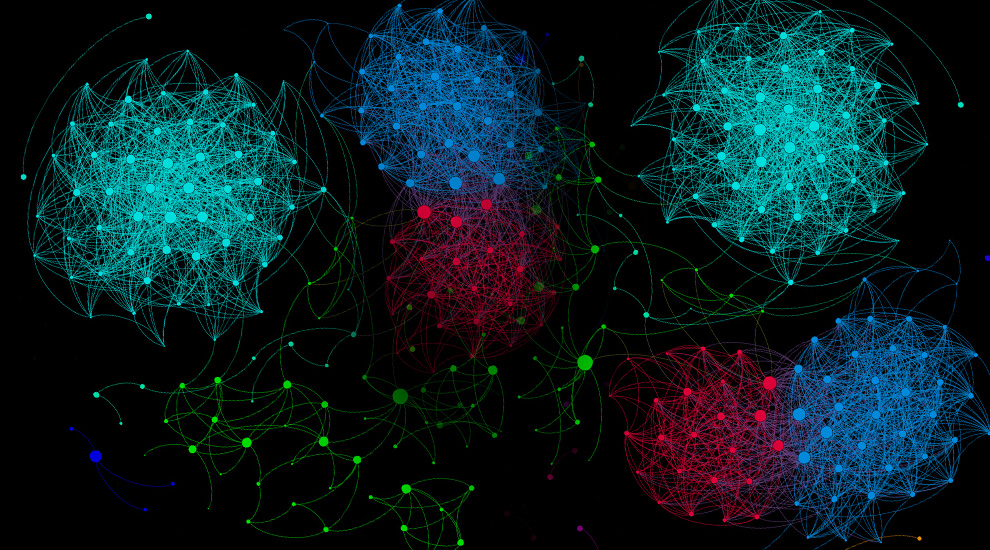Discovering New Payment Efficiencies Through Decentralized Applications
This is a guest post by Danial Daychopan, the founder & CEO of Plutus.it. He is a fintech entrepreneur within the payments industry who has been active in the groundbreaking blockchain and Bitcoin ecosystem since 2013. His vision is to create a next generation payment system by utilizing decentralized applications and harness the true potential hidden between contactless payments and blockchain technology.
With the advent of blockchain technology, a brand new term has emerged: “decentralized applications,” also known as smart contracts. A decentralized application is a novel concept that acts as a secure and public agreement between a distributed ledger such as Bitcoin or Ethereum and one or more of its users.
The main advantages for traditional payment systems (such as debit card infrastructure) to connect with blockchain technology are transparency and security. Positive side effects include a reduction of operational costs, as well as fees charged to customers. And because all transactions and contracts are verified independently by the blockchain itself, this adds the ability to automate audits, accounting and record-keeping.
Decentralized applications can automate business processes and exchange systems in a transparent and immutable manner. The key attribute is that these contracts are not enforced by human entities and organizations, but rather by consensus and mathematics. This ensures that reliable and time-stamped records of transactions and trades continue to exist even if the centralized site and interface go offline, and cannot be altered or deleted by anyone, even the administrator of the system. It also means that within this system, trades and contracts continue to work without the reliability on a centralized system.
Users and employees therefore have the guarantee that the records of their activity will not vanish or be muddled should the site go down or be manipulated. These records are stored across a distributed computer network, which is secured by high degrees of redundancy, transaction chaining, and proof-of-work incentivizing of miners. And considering that decentralized applications are brand new and highly programmable (in some cases, Turing-complete), many significant use cases have not yet been explored.
Recently, major players such as Nasdaq and NYSE have also been looking into blockchain technology for securities trading, and other financial tools such as options and bets. Because the counterparty in these cases is effectively the blockchain itself rather than an individual or an organization, it not only creates a high degree of trust but also stands as a fully reliable, untamperable system that is independent of other factors. Many financial institutions react to this as if it were venom, as they cannot tolerate the idea that their own platform may be outside of their ownership or influence.
In the context of payments and commerce, decentralized applications can be used to create a gateway where users pay with bitcoins, but merchants receive the equivalent payment in their local fiat currency. Here an autonomous application would track all trades, and automatically signal the release of fiat from an escrow account after a digital currency deposit has been completed. While interacting with fiat is by definition centralized, decentralizing most or all other business processes still contains more than enough potential to introduce new payment efficiencies and features.
Further universal payment availability can be achieved for Bitcoin payments if handled by a peer-to-peer exchange and the liquidity provided by other users rather than a centralized entity such as a Bitcoin payment processor, or the service itself. This reduces permit requirements, as well as the risk of losing user funds (since none are being held by the service itself.)
In such a gateway, users sell their digital currencies to traders on a decentralized exchange (application), and traders then provide fiat in return, which is then forwarded to a virtual debit card associated with the user’s account, and the merchant is paid via the aforementioned card. This occurs behind the scenes, while users retain the impression that they are seamlessly paying with a digital currency.
This means that traders provide fiat, consumers pay with their digital currency of choice and the merchant receives his or her preferred local currency (USD, EUR, GDP, etc.) once the payment is completed. This means that the exchange itself occurs without interaction or initial incentive by the merchant, and relies instead on a more “client-side” approach. This gives users the option to decide where to spend their digital currencies, with a wide range of choices provided by existing and very widespread debit card infrastructure.
Conclusion
Blockchain is coming to disrupt your industry – Deloitte.
This could not be more accurate, as the technology evolves by demand from millennials and moves more toward transparency and cost-efficiency. The current trend and the growing number of entrepreneurs and freelancers shows that over the next few years structuring a business model on the blockchain technology is going to be more common. The most startling innovation we will witness is consumers using the technology on a daily basis without being aware of it. Many of the most significant use cases for this technology have not been discovered yet.
The post Discovering New Payment Efficiencies Through Decentralized Applications appeared first on Bitcoin Magazine.



